Key Takeaways
- Leverage modern recruitment platforms like 9cv9 Job Portal and 9cv9 Recruitment Agency to efficiently find top talent in Norway.
- Offer competitive salaries, benefits, and flexible work options to attract and retain skilled professionals in a highly competitive job market.
- Ensure compliance with Norwegian labor laws while building a strong employer brand to enhance hiring success and long-term employee retention.
Hiring employees in Norway in 2025 requires a deep understanding of the country’s evolving job market, legal framework, and recruitment strategies.
As one of the most stable economies in Europe, Norway continues to be an attractive destination for businesses looking to expand their operations.
With a highly skilled workforce, strong labor protections, and a thriving job market, companies need to adopt well-planned hiring strategies to attract top talent.

However, recruiting in Norway comes with its own set of challenges.
Employers must navigate strict labor laws, competitive job markets, and cultural expectations to successfully hire the right employees.
Whether you’re a multinational company establishing a new branch in Norway or a local startup looking to scale, understanding the nuances of recruitment in the Norwegian market is crucial.
Why Hiring in Norway is a Smart Business Decision
Norway boasts a highly educated workforce, ranking among the top in Europe for employee productivity and work-life balance.
The country is known for its progressive employment laws, strong workers’ rights, and emphasis on equal opportunities.
Additionally, Norway’s stable economy, supported by industries such as technology, oil and gas, renewable energy, and healthcare, presents numerous opportunities for businesses to hire skilled professionals.
Moreover, the Norwegian work culture prioritizes collaboration, efficiency, and transparency, making it an ideal environment for companies that value innovation and teamwork.
Companies that understand and adapt to Norway’s professional culture will have a significant advantage in attracting and retaining employees.
Key Hiring Challenges in Norway
While Norway offers many advantages for businesses looking to hire, there are also key challenges that employers must be aware of:
- High Competition for Skilled Talent – Due to Norway’s low unemployment rate, companies often face intense competition when hiring for specialized roles, particularly in tech, engineering, and healthcare.
- Strict Employment Laws – Employers must comply with Norwegian labor laws, which regulate everything from working hours to employee benefits and termination procedures.
- High Cost of Employment – Salaries in Norway are among the highest in Europe, and employers must also account for additional costs such as social security contributions and workplace benefits.
- Language and Cultural Barriers – While many Norwegians speak fluent English, proficiency in Norwegian is often preferred for certain roles, particularly in customer-facing positions.
- Work-Life Balance Expectations – Norway places a strong emphasis on work-life balance, and employers must align their policies with employee expectations for flexible working hours and benefits.
The Importance of a Strategic Hiring Approach in 2025
In 2025, businesses hiring in Norway must adopt a proactive and strategic approach to recruitment. The job market continues to evolve, with increased digitalization, remote work opportunities, and demand for specialized skills shaping hiring trends. Employers who leverage modern recruitment tools, embrace diversity and inclusion, and offer competitive compensation packages will stand out in the talent market.
This comprehensive guide will walk you through the key steps for finding and hiring employees in Norway, from understanding the job market to navigating legal requirements, sourcing top candidates, and ensuring a smooth onboarding process. Whether you’re looking for local talent or hiring internationally, this guide will provide the insights you need to build a strong and successful workforce in Norway.
Before we venture further into this article, we would like to share who we are and what we do.
About 9cv9
9cv9 is a business tech startup based in Singapore and Asia, with a strong presence all over the world.
With over nine years of startup and business experience, and being highly involved in connecting with thousands of companies and startups, the 9cv9 team has listed some important learning points in this overview of How to Find and Hire Employees in Norway in 2025.
If your company needs recruitment and headhunting services to hire top-quality employees, you can use 9cv9 headhunting and recruitment services to hire top talents and candidates. Find out more here, or send over an email to [email protected].
Or just post 1 free job posting here at 9cv9 Hiring Portal in under 10 minutes.
How to Find and Hire Employees in Norway in 2025
- Understanding Norway’s Employment Landscape in 2025
- Legal and Regulatory Requirements for Hiring in Norway
- Best Strategies to Find Employees in Norway
- The Hiring Process: Step-by-Step Guide
- Attracting Top Talent in Norway
- Onboarding and Retaining Employees in Norway
1. Understanding Norway’s Employment Landscape in 2025
Hiring employees in Norway in 2025 requires a deep understanding of the country’s job market trends, evolving workforce demands, and industry-specific recruitment challenges. Norway remains one of the most attractive labor markets in Europe, known for its skilled workforce, strong labor protections, and high employment rates. However, employers must be well-informed about industry trends, work culture expectations, and the legal framework governing employment to make successful hiring decisions.
Job Market Trends and In-Demand Skills
The Norwegian job market in 2025 continues to be shaped by digitalization, sustainability initiatives, and evolving workforce expectations. Employers must stay updated on industry-specific hiring trends to attract the best candidates.
- Continued Growth in the Technology Sector
- High demand for software developers, AI specialists, cybersecurity experts, and data analysts.
- Growth in fintech, AI-driven solutions, and cloud computing services.
- Example: Companies like Telenor and DNB have been actively hiring IT professionals to drive digital transformation.
- Renewable Energy and Green Jobs Expansion
- Increased recruitment for engineers, project managers, and sustainability specialists.
- Growing demand in wind energy, hydroelectric power, and electric vehicle production.
- Example: Equinor, Norway’s largest energy company, has been expanding its offshore wind operations, requiring a new workforce in green technology.
- Healthcare and Life Sciences Talent Demand
- Shortage of nurses, doctors, and healthcare support staff.
- Demand for biotech and pharmaceutical researchers as Norway invests in medical innovation.
- Example: The University of Oslo’s biomedical research projects are driving demand for skilled professionals in life sciences.
- Engineering and Construction Booming
- Need for civil engineers, project managers, and skilled laborers due to infrastructure development.
- Increase in urbanization and public transportation projects.
- Example: Ongoing metro and road expansion projects in Oslo require civil engineers and architects.
- Remote and Hybrid Work Increasing
- Employers adopting flexible work arrangements to attract global talent.
- High demand for remote-friendly roles, including digital marketing, content writing, and customer support.
- Example: Many Norwegian startups now offer hybrid work options to retain top employees.
Popular Industries for Recruitment in Norway
Norway’s economy is diverse, with several key industries offering excellent employment opportunities in 2025.
- Oil & Gas Industry
- Still a significant sector, though transitioning towards greener energy.
- Demand for petroleum engineers, safety inspectors, and offshore workers.
- Example: Companies like Aker BP continue to seek experienced oil and gas professionals.
- Information Technology and Software Development
- Booming IT sector with rising demand for developers, cybersecurity analysts, and AI engineers.
- Example: The rise of Norwegian tech startups, such as Cognite, has led to increased hiring in AI and big data analytics.
- Finance and Fintech
- Growth in digital banking, cryptocurrency, and AI-driven financial solutions.
- Need for financial analysts, compliance officers, and fintech software developers.
- Example: Norway’s BankID and Vipps have driven innovation in digital financial services, creating job opportunities.
- Manufacturing and Maritime Industry
- Demand for skilled trade workers, shipbuilders, and logistics professionals.
- Norway remains a key player in shipbuilding and maritime technology.
- Example: Kongsberg Gruppen hires engineers and specialists for defense and marine technology.
Work Culture and Expectations in Norway
Understanding Norwegian work culture is essential for attracting and retaining employees in 2025. Employers must align with local business values and expectations.
- Work-Life Balance is a Priority
- Employees value flexible working hours and remote work options.
- Shorter workweeks (37.5 hours) compared to many other countries.
- Example: Many companies, including Equinor, offer flexible work arrangements to promote work-life balance.
- Flat Organizational Structures
- Hierarchies are minimal, and collaboration is encouraged.
- Employees expect open communication and decision-making involvement.
- Example: Companies like Schibsted follow a non-hierarchical structure, fostering employee autonomy.
- Strong Employee Rights and Benefits
- Employers must provide paid leave, parental leave, and pension contributions.
- High levels of job security due to strict labor laws.
- Example: Employees are entitled to full salary during sick leave, ensuring job stability.
- Emphasis on Sustainability and Corporate Responsibility
- Norwegian employees prefer working for companies with strong environmental and ethical values.
- Employers must integrate sustainability into business practices.
- Example: Large employers like Norsk Hydro focus on sustainability to attract talent.
Challenges Employers Face When Hiring in Norway
While Norway offers a skilled workforce, employers may face specific challenges when hiring in 2025.
- High Competition for Skilled Professionals
- Businesses must offer competitive salaries and benefits to attract top talent.
- Tech and engineering roles are particularly competitive.
- Stringent Employment Regulations
- Strict hiring and termination rules require careful compliance.
- Example: Companies must justify layoffs and follow due process to terminate employees.
- Language Barriers
- While English is widely spoken, some roles require Norwegian proficiency.
- Example: Customer service and government-related positions often require fluency in Norwegian.
- Higher Cost of Employment
- Salaries and employer contributions (such as social security and pension funds) are costly.
- Example: Companies must contribute around 14.1% of an employee’s salary to national insurance.
Conclusion
Norway’s employment landscape in 2025 presents both opportunities and challenges for businesses. Understanding market trends, in-demand skills, and work culture expectations is crucial for successful hiring. Employers who adapt to evolving workforce demands, embrace flexibility, and comply with Norwegian labor laws will have the best chance of attracting and retaining top talent. By leveraging industry insights and strategic recruitment approaches, companies can build a strong workforce that supports long-term business growth in Norway.
2. Legal and Regulatory Requirements for Hiring in Norway
Hiring employees in Norway requires strict adherence to labor laws and regulatory frameworks that protect workers’ rights while ensuring fair employment practices. Employers must comply with national labor laws, taxation requirements, and workplace standards to avoid legal issues and penalties. Understanding these regulations is essential for companies planning to expand their workforce in Norway.
Key Labor Laws Governing Employment in Norway
Norway has some of the most comprehensive labor laws in Europe, ensuring strong worker protections and employer obligations.
- The Working Environment Act (Arbeidsmiljøloven)
- The primary law governing employment relationships in Norway.
- Covers working conditions, employee rights, and employer responsibilities.
- Protects employees from unfair dismissal and ensures safe working environments.
- Employment Contracts Regulations
- Every employee must have a written contract outlining job roles, salary, working hours, and benefits.
- Fixed-term contracts are only allowed in specific situations (e.g., temporary projects, seasonal work).
- Example: A company hiring a software developer must issue a contract specifying their salary, remote work policies, and expected responsibilities.
- Working Hours and Overtime Rules
- Standard working hours: 37.5 hours per week (Monday to Friday).
- Maximum allowed working hours: 40 hours per week (unless a collective agreement allows more).
- Overtime pay: 40%–100% extra per hour, depending on the agreement.
- Employees have the right to at least 11 hours of rest between work shifts.
- Paid Leave and Holidays
- Employees are entitled to 25 paid vacation days per year (30 days for employees over 60).
- Public holidays (e.g., Constitution Day, Christmas, New Year) must be observed.
- Example: A full-time employee joining in January will be entitled to their full paid vacation quota after one year of employment.
Hiring Foreign Workers in Norway
Employers planning to hire foreign workers must follow specific immigration and visa requirements.
- Work Permits and Residency Requirements
- EU/EEA citizens can live and work in Norway without a work permit but must register with Norwegian authorities.
- Non-EU/EEA citizens need a work permit (Skilled Worker Visa) issued by the Norwegian Directorate of Immigration (UDI).
- Employers must prove that the position cannot be easily filled by a Norwegian or EU citizen before hiring non-EU workers.
- Employer Responsibilities for Foreign Employees
- Must sponsor work visas for non-EU employees.
- Provide fair wages and working conditions equal to those of Norwegian workers.
- Ensure compliance with taxation and social security contributions.
- Example: A Norwegian IT firm hiring an AI engineer from India must apply for a work permit and provide proof of salary meeting minimum wage standards for skilled workers.
Taxation and Social Security Contributions
Employers in Norway must comply with strict tax laws and contribute to social security programs.
- Income Tax Withholding
- Employers must deduct and report income tax (25%–45%) from employees’ salaries.
- Norway uses a progressive tax system, meaning higher salaries are taxed at a higher rate.
- Example: An employee earning NOK 600,000 annually will have a portion of their income taxed at a higher bracket than one earning NOK 400,000.
- Employer Social Security Contributions
- Employers must contribute 14.1% of the employee’s salary to Norway’s National Insurance Scheme.
- Contributions cover pensions, healthcare, and unemployment benefits.
- Example: If an employer hires a marketing manager with a NOK 800,000 annual salary, they must pay approximately NOK 112,800 in social security contributions.
- Value-Added Tax (VAT) Compliance
- Employers must register for VAT (25%) if their business turnover exceeds NOK 50,000 annually.
Employee Rights and Protection Laws
Norwegian labor laws strongly favor employee rights and protections. Employers must adhere to fair treatment and equality policies.
- Equal Pay and Anti-Discrimination Laws
- Employers cannot discriminate based on gender, ethnicity, disability, or religion.
- The Equality and Anti-Discrimination Act enforces equal pay for equal work.
- Example: A company hiring a female engineer must ensure she receives the same salary as a male colleague with the same qualifications.
- Parental Leave and Family Benefits
- Parents are entitled to 49 weeks (full pay) or 59 weeks (80% pay) of parental leave.
- Fathers must take at least 15 weeks of paternity leave.
- Employers must allow flexibility for working parents.
- Protection Against Unfair Dismissal
- Employees cannot be fired without a valid reason and proper notice period.
- Terminations must be justified based on poor performance, restructuring, or misconduct.
- Example: If a company lays off workers due to financial struggles, it must follow a structured redundancy process.
Workplace Health, Safety, and Employee Welfare Regulations
Norwegian law prioritizes employee health and workplace safety.
- Occupational Health and Safety (OHS) Regulations
- Employers must ensure a safe and healthy work environment.
- Employees have the right to sick leave (paid for up to 52 weeks).
- Companies must conduct regular risk assessments to prevent workplace hazards.
- Example: Construction firms must provide workers with safety gear and mandatory training sessions.
- Mental Health and Employee Well-Being Initiatives
- Companies must support employees’ mental well-being through flexible work hours, stress management programs, and access to professional counseling.
- Example: Many Norwegian firms offer wellness programs, gym memberships, and mental health support services.
Penalties for Non-Compliance with Norwegian Labor Laws
Non-compliance with labor laws can result in severe penalties for employers.
- Fines and Legal Sanctions
- Companies violating labor laws may face fines up to NOK 500,000 per infraction.
- Severe cases (e.g., failure to pay wages or providing unsafe working conditions) can lead to business license suspension.
- Example: If a company does not provide a written contract to employees, they may face legal action and be required to pay compensation.
- Workplace Audits and Inspections
- The Norwegian Labour Inspection Authority (Arbeidstilsynet) conducts inspections to ensure compliance.
- Employers must maintain records of employee contracts, tax payments, and workplace safety reports.
Conclusion
Understanding and complying with Norway’s legal and regulatory requirements for hiring in 2025 is crucial for businesses looking to establish a strong and legally sound workforce. Employers must adhere to labor laws, taxation policies, employee rights, and workplace safety standards to create a fair and compliant hiring process. By following these regulations, companies can successfully navigate Norway’s employment landscape while ensuring long-term business success.
3. Best Strategies to Find Employees in Norway
In 2025, finding and hiring employees in Norway requires businesses to employ innovative, strategic, and effective recruitment methods. With a competitive job market, companies must leverage advanced tools and local resources to attract top talent. Whether through specialized job portals, recruitment agencies, or direct outreach, the strategies for hiring in Norway must be carefully tailored to meet the needs of businesses. Here are the best strategies for finding employees in Norway in 2025.
1. Leveraging Online Job Portals
Online job portals remain one of the most effective ways to reach potential candidates in Norway. These platforms allow businesses to advertise job openings and attract a large pool of applicants from across the country.
- 9cv9 Job Portal
- A leading recruitment platform that connects employers with qualified candidates in Norway and across Southeast Asia.
- Offers job seekers the ability to create comprehensive profiles, highlighting skills, experience, and qualifications, making it easier for employers to filter and select candidates.
- Businesses can post detailed job descriptions, including remote and hybrid work options, to attract a wide range of applicants.
- Example: A Norwegian IT company can post job openings for software developers with specific technical expertise, attracting top talent from within the country and internationally.
- Finn.no
- One of the largest and most popular job portals in Norway.
- Offers advanced search filters to help employers find candidates with specific skills, experiences, and qualifications.
- Example: A retail company hiring customer service representatives can use Finn.no to filter candidates by language skills, location, and previous experience.
- NAV (Norwegian Labour and Welfare Administration)
- Offers free recruitment services to Norwegian employers, enabling them to post job openings and access a government-run candidate database.
- Example: A Norwegian manufacturing company can use NAV to find workers for entry-level positions such as assembly line workers or warehouse operators.
2. Partnering with Recruitment Agencies
Engaging a recruitment agency is an excellent strategy for businesses seeking to simplify the hiring process. Specialized recruitment firms can help source qualified candidates and ensure a more efficient hiring experience.
- 9cv9 Recruitment Agency
- Known for its deep understanding of the Norwegian job market, 9cv9 Recruitment Agency can help businesses find candidates with the right skills and cultural fit.
- Expertise in various industries such as IT, finance, healthcare, and engineering, ensuring that candidates meet specific job requirements.
- Example: A company looking to hire a senior marketing manager can partner with 9cv9 to access a network of highly skilled professionals who have relevant experience in digital marketing, content strategy, and data analytics.
- Adecco Norway
- A well-known recruitment agency with a broad network and access to a wide range of candidates.
- Specializes in both temporary and permanent staffing solutions, catering to various industries.
- Example: A logistics company in Norway could use Adecco to quickly find temporary warehouse staff during peak seasons.
- Manpower Norway
- Offers recruitment solutions tailored to businesses looking for both temporary and permanent staff.
- Example: A healthcare organization needing to fill several nursing positions quickly can rely on Manpower’s vast network of qualified professionals.
3. Networking and Industry Events
Networking remains a powerful method for discovering top candidates. Attending industry events and conferences allows businesses to meet potential employees in person, assess their skills, and establish connections.
- Industry Conferences and Job Fairs
- Participating in sector-specific events allows companies to target skilled professionals in their field.
- Example: A tech company seeking developers for AI projects can attend conferences like the Norwegian Developers Conference (NDC) to network and meet candidates with specialized programming skills.
- Meetups and Professional Groups
- Local meetups and professional groups in cities like Oslo, Bergen, and Stavanger provide an opportunity for businesses to engage with talented individuals in an informal setting.
- Example: A company hiring for a marketing role could attend digital marketing meetups to network with candidates who are up-to-date with the latest trends and tools in the field.
- LinkedIn Networking
- LinkedIn remains a key platform for building professional connections. Employers can reach out to potential candidates directly, ensuring they have access to a pool of highly qualified professionals.
- Example: An engineering firm looking for project managers can use LinkedIn to connect with professionals who have relevant experience in large-scale construction projects.
4. Campus Recruitment and Internships
Campus recruitment is an excellent way to build a pipeline of talent. Norwegian universities and colleges produce highly qualified graduates every year, and recruiting directly from these institutions ensures access to the next generation of talent.
- Partnering with Universities
- Norwegian universities like University of Oslo and Norwegian School of Economics offer career fairs and recruitment days where employers can meet students and graduates.
- Example: A company in the financial sector can attend recruitment days at the Norwegian School of Economics (NHH) to find graduates with specialized knowledge in finance, economics, and accounting.
- Internship Programs
- Offering internship programs allows employers to assess potential hires while providing students with valuable industry experience.
- Example: A media company can offer internships in content writing, which can later lead to full-time positions for top-performing candidates.
5. Social Media and Online Advertising
Social media platforms have become integral to recruitment strategies. These platforms allow businesses to not only advertise vacancies but also showcase their company culture and values to attract the right candidates.
- Facebook, Instagram, and Twitter
- Use targeted ads on platforms like Facebook and Instagram to reach a specific demographic or group of professionals.
- Companies can post updates about their culture and the types of roles they are hiring for, boosting their visibility among potential candidates.
- Example: A company specializing in sustainable energy can post on LinkedIn and Instagram to attract candidates passionate about environmental causes.
- LinkedIn Job Listings and Sponsored Posts
- LinkedIn allows employers to create detailed job listings and sponsor posts to ensure they reach the right audience.
- Example: A healthcare company looking for registered nurses can post sponsored job listings to attract candidates in specific regions of Norway.
6. Employee Referral Programs
Employee referral programs are one of the most effective ways to find new hires. Employees who refer friends or former colleagues often provide candidates who are more likely to fit within the company culture and perform well in their roles.
- Incentivized Referrals
- Offering monetary rewards or other incentives for successful referrals can encourage employees to tap into their professional networks.
- Example: A technology firm can offer bonuses to employees who refer qualified software developers or engineers.
- Leveraging Referral Networks
- Employees often have access to a network of qualified candidates. Engaging with these networks can lead to finding candidates who might not be actively looking for new jobs but are open to opportunities.
- Example: A construction company could ask its current employees to refer skilled tradespeople such as electricians and plumbers.
7. Targeting Passive Candidates
Not all great candidates are actively searching for jobs. Engaging passive candidates—those not actively applying for positions—can be a valuable strategy for finding skilled professionals in 2025.
- Talent Pool Building
- Build and maintain a talent pool of qualified candidates who may be interested in future openings. Engage with these candidates periodically to maintain interest.
- Example: A Norwegian energy company can build a talent pool of engineers and technicians by engaging with candidates at industry events and maintaining regular communication through email newsletters.
- Proactive Head Hunting
- Use headhunting techniques to target candidates from competitor companies or industries with transferable skills.
- Example: A media company could target experienced social media managers working for competitors and offer a more attractive salary package or career growth opportunities.
Conclusion
Successfully hiring employees in Norway in 2025 requires a multifaceted approach. By leveraging job portals like 9cv9 Job Portal, partnering with recruitment agencies such as 9cv9 Recruitment Agency, attending networking events, and utilizing modern recruitment technologies, companies can increase their chances of finding the best candidates. With a combination of online tools, traditional methods, and employee referrals, businesses can effectively navigate Norway’s competitive labor market and secure top-tier talent for long-term success.
4. The Hiring Process: Step-by-Step Guide
Hiring employees in Norway in 2025 requires a structured and strategic approach to attract, assess, and onboard the best talent. Employers must navigate compliance with Norwegian labor laws, leverage advanced recruitment technologies, and ensure a smooth candidate experience. Below is a detailed step-by-step guide to the hiring process in Norway in 2025, covering everything from job posting to onboarding.
1. Defining Job Requirements and Creating a Job Description
Before starting the hiring process, employers need to clearly define the job role and expectations. A well-crafted job description helps attract the right candidates and streamlines the selection process.
- Identify Job Requirements
- Outline the key responsibilities, skills, and qualifications needed for the role.
- Consider both technical skills (e.g., programming languages for a developer) and soft skills (e.g., communication skills for a customer service role).
- Example: A logistics company looking for a supply chain manager should specify expertise in inventory management, procurement, and logistics software.
- Craft a Compelling Job Description
- Use clear, concise, and engaging language.
- Include:
- Job Title (e.g., “Senior Data Analyst – Remote/Hybrid”)
- Job Responsibilities (list key duties)
- Required Skills and Qualifications (minimum education, certifications, experience)
- Preferred Skills (additional qualities that would be beneficial)
- Work Location (remote, hybrid, or on-site in Oslo, Bergen, or other cities)
- Salary Range and Benefits (if applicable)
- Example: A software company posting a job for a Full Stack Developer should specify required technologies (React, Node.js, Python), years of experience, and whether remote work is available.
2. Posting the Job and Sourcing Candidates
Once the job description is ready, the next step is to find and attract candidates using various recruitment channels.
- Use Online Job Portals
- 9cv9 Job Portal – A leading platform connecting employers with job seekers in Norway.
- Finn.no – Norway’s most popular local job portal.
- NAV Job Database – Government-managed job board offering free job postings for employers.
- Example: A fintech startup looking for an AI engineer can post the role on 9cv9 and NAV to attract both local and international talent.
- Engage Recruitment Agencies
- 9cv9 Recruitment Agency – Specializes in sourcing highly skilled professionals for various industries.
- Manpower Norway – Provides both temporary and permanent staffing solutions.
- Example: A healthcare provider in Oslo can partner with 9cv9 Recruitment Agency to find experienced nurses.
- Leverage Social Media and Networking
- LinkedIn – Post job openings and engage with passive candidates.
- Facebook & Instagram – Targeted job ads to reach specific demographics.
- Industry Meetups & Conferences – Attend networking events to connect with professionals.
- Example: A marketing agency hiring a social media strategist can use Instagram and LinkedIn ads to reach digital marketing professionals.
- Employee Referrals
- Encourage current employees to refer qualified candidates.
- Offer incentives such as bonuses for successful referrals.
- Example: A construction company can implement a referral program where employees receive a financial reward for recommending skilled tradespeople.
3. Screening and Shortlisting Candidates
Once applications are received, the next step is to filter and shortlist the best candidates for interviews.
- Resume and Cover Letter Review
- Check for relevant experience, skills, and qualifications.
- Look for customized applications tailored to the job description.
- Example: A law firm hiring a corporate lawyer should prioritize candidates with relevant Norwegian legal experience and certifications.
- Preliminary Screening Calls
- Conduct 10–15 minute phone or video interviews to assess basic qualifications.
- Verify availability, salary expectations, and general interest in the role.
- Example: A retail company can screen cashier applicants by checking their previous experience and willingness to work flexible shifts.
- Skill Assessments and Tests
- Technical roles may require coding tests or case studies.
- Soft skills can be evaluated through personality assessments.
- Example: A tech firm hiring a software engineer may require candidates to complete a live coding challenge.
4. Conducting Interviews
Interviews help employers assess candidates’ skills, cultural fit, and problem-solving abilities.
- Types of Interviews
- One-on-One Interviews – Traditional face-to-face or virtual interviews.
- Panel Interviews – Multiple interviewers assessing a candidate simultaneously.
- Technical Interviews – Focused on job-specific skills.
- Behavioral Interviews – Assess past experiences to predict future performance.
- Example: A financial services company hiring an investment analyst may conduct a case study interview to test decision-making skills.
- Common Interview Questions
- Behavioral Questions: “Tell me about a time you handled a difficult client.”
- Technical Questions: “How would you optimize SQL queries for faster performance?”
- Culture-Fit Questions: “What work environment do you thrive in?”
5. Making a Job Offer
Once the ideal candidate is selected, the next step is extending an offer and negotiating terms.
- Drafting the Offer Letter
- Clearly outline:
- Job Title and Responsibilities
- Salary and Benefits Package
- Work Schedule and Location
- Start Date and Employment Type (Full-time, Part-time, Contract)
- Example: A logistics firm may specify shift work details and overtime pay in the offer letter for warehouse workers.
- Clearly outline:
- Salary and Contract Negotiation
- Candidates may negotiate salary, benefits, or remote work options.
- Be prepared to offer competitive compensation based on market trends.
- Example: A senior software developer may negotiate additional stock options or a flexible work schedule.
6. Onboarding and Employee Integration
A smooth onboarding process ensures new employees are set up for success.
- Pre-Onboarding Preparation
- Provide necessary paperwork, including tax forms and employment contracts.
- Arrange company email and software access before the start date.
- Example: An IT firm hiring a remote worker should ensure VPN access and necessary tools are provided before day one.
- First Week Orientation
- Conduct an introduction to company culture, policies, and key team members.
- Provide role-specific training sessions.
- Assign a mentor or buddy for guidance.
- Example: A marketing agency hiring a content writer can provide brand guidelines and writing style training during the first week.
- Ongoing Support and Performance Evaluation
- Schedule regular check-ins during the first 90 days.
- Set clear performance goals and provide constructive feedback.
- Example: A finance company hiring an accountant should assess work accuracy and client interaction skills during the probation period.
Conclusion
The hiring process in Norway in 2025 requires a well-structured approach to attract, evaluate, and retain the best employees. By leveraging job portals like 9cv9 Job Portal, partnering with expert recruiters such as 9cv9 Recruitment Agency, and using social media, businesses can effectively source top talent. A strong focus on structured interviews, skill assessments, and seamless onboarding ensures that new hires integrate successfully into the organization. With a well-executed hiring process, businesses can secure high-performing employees who contribute to long-term success.
5. Attracting Top Talent in Norway
In 2025, attracting top talent in Norway requires a strategic and multi-faceted approach due to the competitive job market and evolving workforce expectations. Companies must offer more than just high salaries—they need to provide a compelling employer brand, leverage digital recruitment strategies, and create a work environment that appeals to skilled professionals. Below are key strategies to attract the best candidates in Norway, with relevant examples.
1. Strengthening Employer Branding
A strong employer brand is essential to position a company as an attractive workplace. Top professionals look for organizations with a positive reputation, strong values, and an engaging work culture.
- Develop a Clear Employer Value Proposition (EVP)
- Clearly define what makes your company unique as an employer.
- Focus on company culture, career growth opportunities, and work-life balance.
- Example: Equinor, a leading energy company in Norway, promotes its sustainability efforts and innovation-driven culture as key employer strengths.
- Showcase Company Culture Online
- Use social media platforms like LinkedIn, Instagram, and TikTok to highlight employee experiences, workplace diversity, and team-building activities.
- Share testimonials and success stories from current employees.
- Example: Telenor, a major telecommunications company, actively posts about its flexible work policies and employee engagement programs on LinkedIn.
- Leverage Employee Advocacy
- Encourage employees to share their positive experiences on professional networks.
- Implement an internal referral program where employees recommend candidates for open positions.
- Example: DNB Bank offers financial incentives to employees who successfully refer candidates that get hired.
2. Offering Competitive Compensation and Benefits
Attracting top talent in Norway requires offering more than just a competitive salary. Companies must provide comprehensive benefits that align with candidates’ evolving needs.
- Competitive Salaries Based on Industry Standards
- Conduct market research to ensure salary packages remain competitive.
- Example: A software development company must offer salaries that match or exceed the average for tech roles in Oslo, which range from NOK 700,000–1,200,000 per year for senior developers.
- Attractive Perks and Benefits
- Flexible work arrangements (hybrid and remote options).
- Extended parental leave policies and childcare support.
- Generous pension contributions and health insurance coverage.
- Example: Aker Solutions offers employees flexible working hours and wellness programs to promote work-life balance.
- Performance-Based Incentives
- Annual bonuses, stock options, and profit-sharing plans.
- Recognition and rewards for high-performing employees.
- Example: Statkraft, a renewable energy company, provides performance-based bonuses tied to sustainability targets.
3. Leveraging Digital Recruitment Channels
The recruitment landscape has shifted towards digital-first approaches, making it essential for companies to leverage online platforms effectively.
- Utilize Job Portals and Recruitment Agencies
- Post job openings on platforms like:
- 9cv9 Job Portal – Specialized in international and remote hiring.
- NAV.no – Norway’s government job portal.
- LinkedIn Jobs – Professional networking and job listings.
- Example: A fintech startup in Bergen looking for AI engineers can use 9cv9 to attract international talent with relevant expertise.
- Post job openings on platforms like:
- AI-Powered Hiring Platforms
- Use AI-based recruitment tools to streamline candidate screening.
- Leverage chatbots for initial interviews and candidate engagement.
- Example: Telenor utilizes AI-powered HR software to filter applications and match candidates with the best job roles.
- Social Media Recruitment
- Run targeted job ads on LinkedIn, Facebook, and Instagram.
- Engage with passive candidates through industry-related discussions.
- Example: A digital marketing agency in Oslo can use Instagram reels to showcase company culture and attract creative professionals.
4. Creating a Flexible and Inclusive Work Environment
Top professionals prioritize workplaces that offer flexibility, diversity, and inclusion.
- Remote and Hybrid Work Opportunities
- Provide employees with the option to work remotely or on a hybrid basis.
- Example: Schibsted, a Norwegian media group, offers flexible work models to attract top journalists and tech talent.
- Diversity and Inclusion Initiatives
- Implement policies that promote gender equality and cultural diversity.
- Offer unconscious bias training to hiring managers.
- Example: DNB Bank has a leadership program aimed at increasing female representation in executive roles.
- Employee Wellness Programs
- Mental health support, gym memberships, and work-life balance policies.
- Organize wellness challenges and mindfulness sessions.
- Example: Kongsberg Gruppen, a defense and engineering firm, provides mental health counseling and wellness subsidies.
5. Providing Career Growth and Development Opportunities
Professionals in Norway seek employers that offer continuous learning and career advancement opportunities.
- Professional Development Programs
- Provide access to online courses, workshops, and certifications.
- Fund employees’ participation in industry conferences.
- Example: Equinor offers employees tuition reimbursement for further education in energy and sustainability.
- Mentorship and Leadership Programs
- Pair junior employees with experienced mentors for career guidance.
- Offer structured leadership training for high-potential employees.
- Example: Yara International, a global agriculture company, has a leadership development program to nurture in-house talent.
- Internal Promotions and Career Pathing
- Clearly outline career progression paths within the organization.
- Recognize and reward employees for loyalty and performance.
- Example: Telenor prioritizes internal promotions, ensuring employees have a clear roadmap for career growth.
6. Engaging with Talent Through Networking and Events
Face-to-face interactions remain a powerful tool for attracting top talent.
- Participate in Career Fairs and Industry Events
- Attend tech conferences, university job fairs, and networking events.
- Host company-sponsored webinars on industry trends.
- Example: A cybersecurity firm in Oslo can participate in Oslo Innovation Week to connect with tech professionals.
- Collaborate with Universities and Training Institutions
- Offer internships and apprenticeships to build a pipeline of future talent.
- Partner with universities for research and innovation projects.
- Example: SINTEF, a Norwegian research institute, collaborates with NTNU (Norwegian University of Science and Technology) to recruit top engineering graduates.
- Build Relationships with Passive Candidates
- Maintain a talent pool of highly skilled professionals for future job openings.
- Engage with passive candidates via LinkedIn and company newsletters.
- Example: A renewable energy firm can build a database of climate scientists and engineers to recruit when expansion opportunities arise.
Conclusion
Attracting top talent in Norway in 2025 requires a strategic approach that goes beyond traditional recruitment. Companies must strengthen their employer branding, offer competitive compensation and benefits, leverage digital recruitment tools, and create a flexible, inclusive work environment. Additionally, providing career growth opportunities and engaging with talent through networking and industry events are crucial in securing the best professionals. By implementing these strategies, businesses in Norway can position themselves as employers of choice, ensuring long-term success in an increasingly competitive job market.
6. Onboarding and Retaining Employees in Norway
Effective onboarding and retention strategies are crucial for businesses in Norway to maintain a strong and engaged workforce. In 2025, companies must go beyond traditional hiring approaches and create a structured onboarding process while fostering a supportive, inclusive, and growth-oriented workplace culture. Given Norway’s competitive labor market, organizations must invest in employee satisfaction, career development, and work-life balance to ensure long-term retention.
The following strategies will help businesses successfully onboard new employees and retain top talent in Norway.
1. Implementing a Structured Onboarding Process
A well-structured onboarding program ensures that new hires integrate seamlessly into the company, understand their roles, and feel connected to the organization.
a) Pre-Onboarding Preparation
Before the new hire’s first day, companies should have a structured plan in place.
- Send a Welcome Package
- Provide essential documents, company policies, and an introduction to the team.
- Include a personalized welcome letter from leadership.
- Example: Equinor, a leading Norwegian energy company, sends new hires a digital welcome kit with company insights and role expectations before their first day.
- Set Up IT and Workspaces in Advance
- Ensure laptops, email accounts, and software access are ready before arrival.
- If remote work is an option, provide necessary home office equipment.
- Example: Telenor ensures that remote employees receive a company laptop and secure VPN access before their first workday.
b) First-Day and First-Week Orientation
New employees should feel engaged and informed from day one.
- Host an Interactive Orientation Session
- Cover company culture, mission, and values.
- Introduce key stakeholders and company leadership.
- Example: DNB Bank organizes a virtual meet-and-greet with executives for new hires.
- Assign a Mentor or Buddy System
- Pair new hires with an experienced employee to provide guidance.
- Helps in faster adaptation to company culture.
- Example: Schibsted, a Norwegian media group, assigns mentors to each new hire to assist with the transition process.
- Clarify Role Expectations Early
- Conduct one-on-one meetings with direct managers.
- Provide a 30-60-90 day roadmap outlining short-term goals.
- Example: A software company in Oslo provides a roadmap detailing the first three months of development goals for new engineers.
2. Fostering a Positive Work Culture for Retention
A strong workplace culture enhances employee satisfaction and reduces turnover rates.
a) Creating an Inclusive and Collaborative Environment
- Encourage Diversity and Inclusion Initiatives
- Promote equal opportunities for all employees.
- Implement diversity training programs.
- Example: Yara International has a diversity and inclusion committee that ensures equal career opportunities for all employees, regardless of gender or nationality.
- Promote Open Communication
- Conduct regular team meetings and feedback sessions.
- Use collaboration tools like Slack or Microsoft Teams for engagement.
- Example: Kongsberg Gruppen, a defense and engineering firm, holds monthly “town hall” meetings to keep employees informed about company developments.
b) Prioritizing Employee Well-Being
- Work-Life Balance and Flexible Work Arrangements
- Offer hybrid and remote work options.
- Implement shorter workweeks where possible.
- Example: Telenor offers employees flexible schedules, allowing them to work from home several days a week.
- Mental Health and Wellness Programs
- Provide access to mental health professionals and stress management workshops.
- Encourage wellness activities like yoga and meditation.
- Example: Statkraft, a renewable energy company, offers free mental health counseling sessions to employees.
3. Providing Competitive Compensation and Benefits
Attractive compensation packages play a vital role in employee retention.
a) Market-Competitive Salaries
- Conduct Regular Salary Reviews
- Adjust salaries to reflect industry benchmarks.
- Offer competitive bonuses and incentives.
- Example: A Norwegian fintech firm ensures its developers receive salaries that are competitive with other European tech hubs.
- Performance-Based Rewards
- Implement annual bonuses and stock options for high performers.
- Example: Aker Solutions provides performance bonuses based on project completion and innovation contributions.
b) Offering Comprehensive Benefits Packages
- Health and Wellness Benefits
- Provide extended medical insurance, dental care, and gym memberships.
- Example: DNB Bank offers employees free health screenings and discounted gym memberships.
- Generous Parental Leave Policies
- Offer extended maternity and paternity leave.
- Example: Norwegian government policies mandate paid parental leave, which leading companies often extend further as an added benefit.
- Retirement and Pension Plans
- Offer employer-contributed pension schemes.
- Example: Equinor provides one of the best pension schemes in the Norwegian corporate sector.
4. Encouraging Career Development and Growth
Employees are more likely to stay with companies that invest in their professional growth.
a) Providing Training and Upskilling Opportunities
- Continuous Learning Programs
- Offer online courses, certifications, and leadership training.
- Example: Telenor partners with universities to provide free online courses in business management and technology.
- Tuition Reimbursement and Scholarships
- Fund employees’ advanced education and professional development.
- Example: A renewable energy company in Norway covers tuition fees for employees pursuing a master’s degree in sustainability.
b) Creating Clear Career Advancement Pathways
- Internal Promotions and Career Progression Plans
- Outline a clear promotion structure and growth roadmap.
- Example: DNB Bank has a leadership development program for employees to transition into management roles.
- Cross-Departmental Opportunities
- Allow employees to transition into new roles within the company.
- Example: A software engineer at Schibsted can switch to a product management role through internal training programs.
5. Strengthening Employee Engagement and Recognition
Regular employee engagement and recognition initiatives help retain top talent.
a) Recognizing and Rewarding Employee Contributions
- Employee of the Month and Peer Recognition Programs
- Create awards and recognition programs to celebrate achievements.
- Example: Aker Solutions holds an annual employee appreciation event to honor top contributors.
- Monetary and Non-Monetary Rewards
- Offer cash bonuses, gift cards, or extra vacation days.
- Example: A Norwegian tech startup offers employees paid trips for achieving major milestones.
b) Encouraging Team Bonding and Social Events
- Company Retreats and Team-Building Activities
- Organize offsite retreats, workshops, and team dinners.
- Example: Statkraft takes employees on nature retreats to promote sustainability awareness and team bonding.
- Employee Feedback and Involvement
- Conduct engagement surveys to gather employee opinions.
- Implement employee suggestions in company decisions.
- Example: A digital marketing agency in Oslo allows employees to vote on new workplace policies.
Conclusion
Onboarding and retaining employees in Norway in 2025 requires a holistic approach that encompasses structured onboarding, a positive work culture, competitive compensation, career development, and continuous engagement. Companies that invest in these areas will not only reduce turnover but also build a motivated, loyal, and highly skilled workforce. By implementing these strategies, businesses can create an environment where employees feel valued, supported, and inspired to contribute to long-term success.
Conclusion
Finding and hiring employees in Norway in 2025 requires a strategic, well-informed, and adaptable approach. With an evolving job market, shifting workforce expectations, and technological advancements, companies must implement modern recruitment techniques, leverage top hiring platforms, and adopt best practices to attract, onboard, and retain skilled talent.
Norway’s employment landscape is highly competitive, particularly in sectors such as technology, engineering, healthcare, and finance. Businesses must not only comply with the country’s strong labor regulations but also embrace innovative recruitment strategies to secure the best candidates. From understanding labor laws and cultural expectations to optimizing hiring processes with AI-powered job portals like 9cv9 and trusted recruitment agencies such as 9cv9 Recruitment Agency, every step in the hiring journey must be carefully planned to achieve success.
Key Takeaways for Employers Hiring in Norway in 2025
To summarize, businesses looking to hire in Norway should focus on:
- Understanding the Norwegian Employment Landscape
- Be aware of labor laws, work culture, and candidate expectations.
- Embrace Norway’s focus on work-life balance, diversity, and sustainability.
- Leveraging the Best Hiring Strategies
- Utilize online job portals, recruitment agencies, and networking platforms.
- Develop a strong employer brand to attract top talent.
- Implement data-driven recruitment methods to enhance efficiency.
- Attracting Top Talent
- Offer competitive salaries, strong benefits, and flexible work arrangements.
- Foster an inclusive and engaging workplace culture.
- Highlight career growth opportunities and sustainability initiatives.
- Onboarding and Retaining Employees
- Design structured onboarding programs for seamless integration.
- Invest in employee well-being, training, and career progression.
- Maintain high levels of employee engagement and recognition.
Why a Proactive Hiring Approach is Essential in 2025
As Norway’s job market becomes increasingly competitive, companies that proactively refine their hiring strategies will have a significant advantage in attracting and retaining skilled professionals. The demand for top talent is growing across various industries, and businesses that fail to modernize their recruitment processes risk losing out to more agile competitors.
- Technological advancements: AI-driven hiring tools, recruitment automation, and data analytics are transforming how companies find and evaluate candidates. Employers must embrace these innovations to stay ahead.
- Evolving candidate expectations: Job seekers now prioritize work-life balance, remote work options, and strong company values. Organizations that align with these expectations will be more attractive to skilled professionals.
- Global talent competition: With the rise of remote work and digital transformation, Norwegian companies are not just competing locally but also internationally for top talent. A strong hiring and retention strategy will be key to securing the best candidates.
The Role of 9cv9 Job Portal and 9cv9 Recruitment Agency in Simplifying Hiring in Norway
Hiring in Norway can be complex, but platforms like 9cv9 Job Portal and services from 9cv9 Recruitment Agencymake the process seamless. By leveraging AI-driven job matching, automated candidate screening, and specialized recruitment expertise, these tools help employers identify top talent efficiently and streamline their hiring processes.
- 9cv9 Job Portal: Helps businesses reach a vast pool of qualified candidates quickly, with smart filtering and applicant tracking tools.
- 9cv9 Recruitment Agency: Provides end-to-end recruitment solutions, handling everything from sourcing and interviewing to onboarding new hires.
For businesses looking to scale and optimize their hiring efforts in Norway, partnering with 9cv9 is a strategic move to ensure long-term recruitment success.
Final Thoughts: Building a Future-Ready Workforce in Norway
Hiring and retaining employees in Norway in 2025 is not just about filling job vacancies—it’s about building a resilient, motivated, and future-ready workforce. Employers who prioritize modern hiring practices, strong employer branding, and employee well-being will create workplaces where professionals thrive and businesses grow.
By adopting a proactive, technology-driven, and employee-centric approach, companies can navigate the Norwegian job market successfully and position themselves as top employers of choice. Whether through AI-powered recruitment, inclusive workplace policies, or strategic partnerships with hiring platforms like 9cv9, businesses can unlock new opportunities and build sustainable teams that drive long-term success.
If you’re an employer looking to hire in Norway in 2025, now is the time to refine your recruitment strategies, embrace innovation, and invest in your workforce to secure top-tier talent for years to come.
If you find this article useful, why not share it with your hiring manager and C-level suite friends and also leave a nice comment below?
We, at the 9cv9 Research Team, strive to bring the latest and most meaningful data, guides, and statistics to your doorstep.
To get access to top-quality guides, click over to 9cv9 Blog.
People Also Ask
What are the best ways to find employees in Norway in 2025?
Using job portals like 9cv9, recruitment agencies, networking events, LinkedIn, and industry-specific job boards are the most effective ways to find employees in Norway.
How competitive is the job market in Norway in 2025?
The Norwegian job market is highly competitive, especially in IT, engineering, healthcare, and finance. Companies must offer attractive salaries, benefits, and work-life balance to secure top talent.
What legal requirements must employers follow when hiring in Norway?
Employers must comply with Norway’s Working Environment Act, which governs contracts, working hours, benefits, and employee rights to ensure fair employment practices.
Is it necessary to offer a work contract to employees in Norway?
Yes, Norwegian labor laws require employers to provide a written contract detailing job roles, salary, working hours, and benefits for transparency and compliance.
What is the average salary for employees in Norway in 2025?
Salaries vary by industry, but the average wage in Norway is among the highest in Europe, with IT, finance, and healthcare professionals earning competitive salaries.
How can international companies hire employees in Norway?
Foreign companies can hire in Norway by setting up a local entity, using Employer of Record (EOR) services, or partnering with 9cv9 Recruitment Agency for seamless hiring.
What are the most in-demand jobs in Norway in 2025?
IT specialists, engineers, healthcare professionals, finance experts, and skilled trades are among the most in-demand jobs due to Norway’s evolving economy and digitalization.
How do job portals like 9cv9 help in hiring employees in Norway?
9cv9 Job Portal offers AI-driven job matching, automated candidate screening, and a vast talent pool to streamline the hiring process in Norway.
Are recruitment agencies in Norway helpful for hiring employees?
Yes, agencies like 9cv9 Recruitment Agency provide tailored hiring solutions, helping businesses find skilled candidates efficiently while handling legal and administrative aspects.
How important is employer branding in attracting employees in Norway?
Strong employer branding, including positive workplace culture, career growth opportunities, and sustainability initiatives, helps attract top talent in Norway’s competitive market.
What are the best strategies for attracting top talent in Norway?
Offering competitive salaries, work-life balance, remote work options, career development programs, and diversity-friendly policies helps attract top talent in Norway.
Is remote work common in Norway in 2025?
Yes, remote work is widely accepted in Norway, especially in IT and corporate sectors. Employers offering flexible work arrangements gain a hiring advantage.
How can companies optimize job postings for Norwegian candidates?
Use clear job descriptions, highlight salary and benefits, include Norwegian language requirements if necessary, and post on platforms like 9cv9 and LinkedIn.
What are the best networking methods for hiring in Norway?
Engaging in industry events, business forums, LinkedIn networking, and leveraging local professional associations help businesses connect with potential hires.
How can companies assess candidates effectively in Norway?
Using structured interviews, skill-based assessments, personality tests, and AI-driven applicant tracking systems improves hiring accuracy and efficiency.
What role does AI play in hiring employees in Norway?
AI-powered recruitment tools, like those on 9cv9, help in resume screening, candidate matching, and predicting job fit, making hiring faster and more accurate.
What benefits should employers offer to attract employees in Norway?
Competitive salaries, pension plans, paid vacation, parental leave, health insurance, and flexible work arrangements are key benefits to attract employees in Norway.
How long does the hiring process take in Norway?
The hiring process typically takes 4-6 weeks, depending on the role and industry. Streamlining recruitment with job portals and agencies helps reduce hiring time.
Do employers need to offer relocation assistance for foreign employees in Norway?
While not mandatory, offering relocation packages, housing assistance, and visa sponsorship can attract skilled foreign workers to Norway.
What are the key cultural aspects to consider when hiring in Norway?
Norwegian work culture values equality, autonomy, transparency, and work-life balance. Employers should create inclusive workplaces that respect these values.
How do probation periods work in Norway?
Probation periods in Norway typically last 3-6 months, allowing employers to assess performance before offering long-term employment contracts.
Are internships a good way to hire employees in Norway?
Yes, internships help businesses identify and train potential employees while providing students and graduates with hands-on industry experience.
What industries have the highest demand for skilled workers in Norway?
Tech, renewable energy, healthcare, engineering, and finance sectors have the highest demand for skilled workers due to digitalization and industry growth.
How do businesses retain employees in Norway?
Offering career growth, professional development, competitive salaries, work-life balance, and employee recognition programs ensures high retention rates.
What are the main challenges in hiring employees in Norway?
Strict labor laws, high salary expectations, a competitive job market, and skill shortages in specialized fields can make hiring challenging in Norway.
How does Norway’s strong labor union culture affect hiring?
Labor unions play a major role in wage negotiations, working conditions, and employee rights, so companies must work closely with unions when hiring.
Is social media effective for recruiting employees in Norway?
Yes, platforms like LinkedIn, Facebook, and industry-specific forums are effective for employer branding and direct candidate outreach in Norway.
What is the role of employee well-being in hiring success in Norway?
Norwegian employees prioritize well-being, so offering mental health support, wellness programs, and work-life balance improves hiring and retention.
How can companies future-proof their hiring strategies in Norway?
Investing in AI recruitment tools, diversity initiatives, upskilling employees, and maintaining a strong employer brand ensures long-term hiring success.
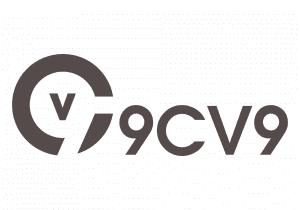










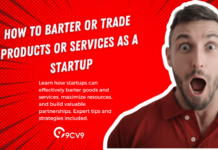




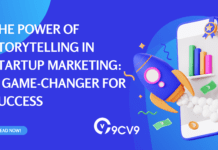





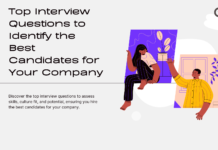


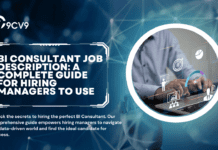


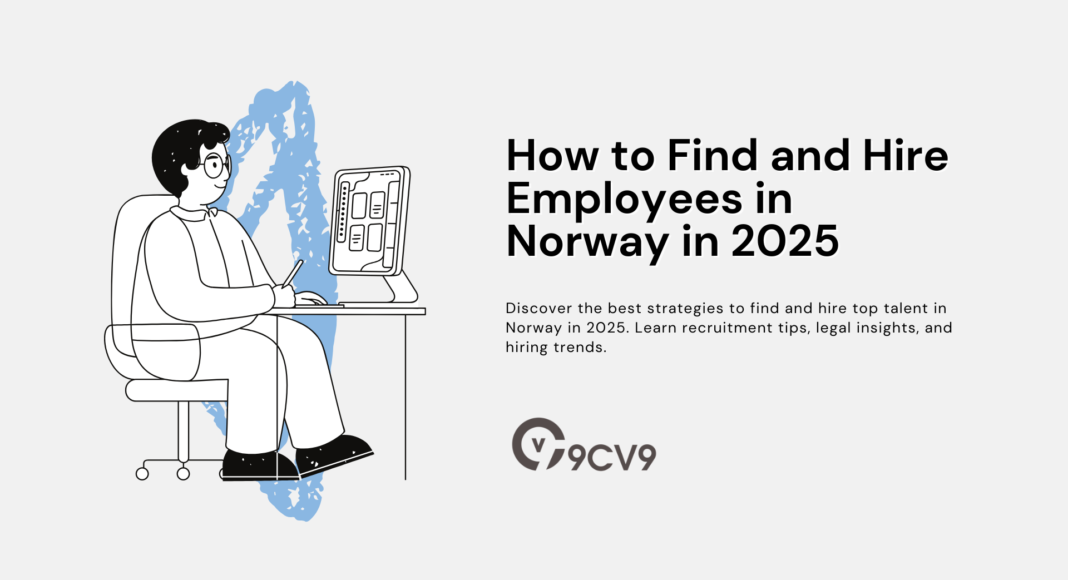


![Writing A Good CV [6 Tips To Improve Your CV] 6 Tips To Improve Your CV](https://blog.9cv9.com/wp-content/uploads/2020/06/2020-06-02-2-100x70.png)


